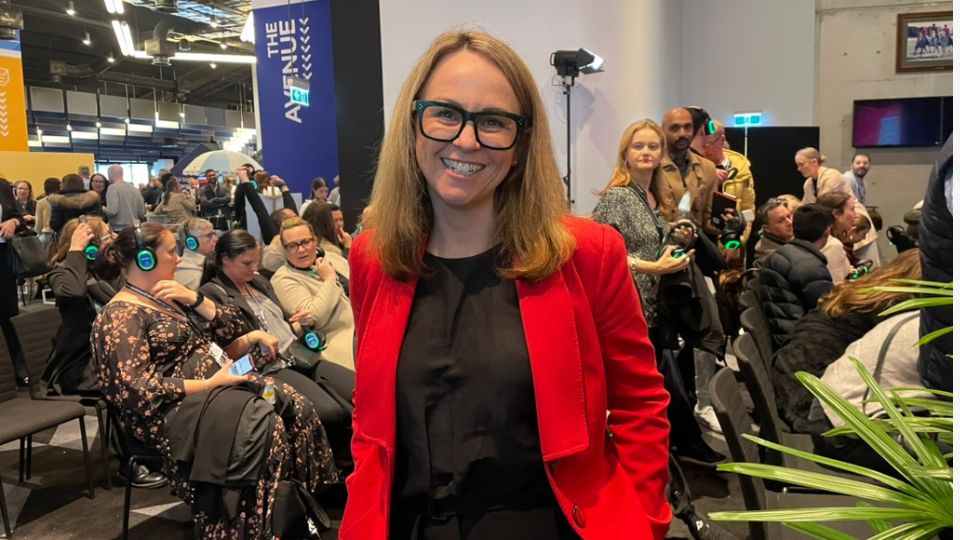Property management professionals handle more customer touchpoints than any other part of a real estate business, yet most agencies treat them as back-office support staff.
Fiona Blayney has spent years challenging this mindset, arguing that property managers should be the strategic centrepiece of every agency’s growth plan.
Her reasoning is simple: in a 1,000-property portfolio, rental turnover alone creates 5,000 face-to-face interactions annually with potential buyers, sellers and landlords.
“What other industry do you have that you participate in even as a consumer where every single person in your marketplace participates in your industry?” Fiona asks.
“When you pass any human in your marketplace, they are participating in the real estate space either as a renter, as a landlord, as a vendor, or a purchaser now or over the next seven to ten years.”
This universal participation creates an opportunity most agencies squander by relegating property management to an afterthought.
The Community Asset Hidden in Plain Sight
Fiona’s approach centres on recognising property management as the ultimate community-building tool.
Where sales agents might struggle to find warm leads, property managers interact with hundreds of local residents monthly through routine inspections, lease renewals and maintenance coordination.
“What’s the most important thing that you have in your business right now?” Fiona explains.
“Some of you are gonna say the people. Some of you are going to say your processes. Some of you are gonna say profitability, equity, assets, etcetera. I’m gonna say no. I’m gonna say it’s your community.”
The mathematics support her argument. A typical 1,000-property portfolio experiences 50% annual rental turnover, creating 500 leasing opportunities.
With an average of 10 prospective tenants viewing each property, that generates 5,000 direct interactions with local residents who may become future clients.
“500 times 10, that’s 5,000 people that are potentially going to come through some level of interaction with your business via the property management department,” Fiona notes.
Factor in landlord relationships, their friends and families, and the network expands exponentially.
From Cost Centre to Revenue Engine
Fiona’s strategic framework demands property management divisions prove their worth on two levels. First, they must generate independent profitability.
Second, they should cover the agency’s entire operational overhead.
“What we knew was that businesses was we want property management to be profitable in its own right,” she says.
But profitability alone isn’t ambitious enough. Her clients must answer a harder question: “What does this business or property management need to look like? What size does it need to get to in order for it to also cover the cost base of the entire organization?”
This insurance-policy approach proved its value during COVID-19 market disruptions, when sales activity plummeted but rental income continued flowing.
“If I can cover the cost base of operating my business, if sales doesn’t turn up tomorrow, there’s a market fluctuation or massive dip, then property management’s gonna keep the doors open, and we saw that in COVID,” Fiona stressed.
The strategy also addresses technological disruption concerns.
While agents worry about artificial intelligence replacing property managers, Fiona believes the threat targets sales teams first.
“You guys are worried about property management getting taken over by AI, the government fear the salespeople first, I say.”
Challenging the Repositioning Mindset
Fiona questions why property management needs “repositioning” at all, suggesting the problem lies in how agencies initially positioned these divisions.
“Property management, the sheer concept that we have to reposition it, that is a challenging word framing for me,” she explains.
“Because if you are repositioning it, my question is, how have you positioned it in the first place, and why does it need to be repositioned?”
Her philosophy treats property management and sales as equal partners working in harmony, not hierarchical divisions where one supports the other.
This integrated approach recognises that both departments serve the same community through different transaction types.
The Relationship Imperative
The foundation of Fiona’s strategy rests on relationship building, particularly as traditional marketing channels become saturated and expensive.
Property managers possess natural advantages in this area through their ongoing tenant and landlord interactions.
“Property management is the forward facing part of our business, our number one support to be able to interact with clients and customers to do one thing, build relationships with our community,” Fiona emphasised.
These relationships become increasingly valuable as digital marketing costs rise and consumer trust in online advertising declines.
Property managers build credibility through consistent service delivery rather than advertising promises.
“Finding in your marketplace is becoming harder and harder and harder to communicate and nurture relationships with people that you’ve never met,” Fiona observed.
The relationship-first approach creates sustainable competitive advantages that technology cannot easily replicate.
While AI might automate administrative tasks, human connections remain essential for high-value real estate transactions.
The Strategic Implementation
Fiona’s vision requires business owners to identify and articulate property management’s true organisational value.
This goes beyond traditional profit and loss metrics to encompass lead generation, community engagement and business continuity benefits.
Success depends on treating property managers as relationship professionals rather than administrative staff.
This means investing in their training, technology and authority to make decisions that strengthen client connections.
The approach also demands patience, as relationship-building creates compound returns over time rather than immediate revenue spikes.
Fiona’s framework transforms property management from a necessary business function into a strategic growth engine that builds community connections, generates sustainable revenue and provides market resilience.
For agencies willing to embrace this shift, property management becomes their most powerful competitive advantage in an increasingly crowded marketplace.

